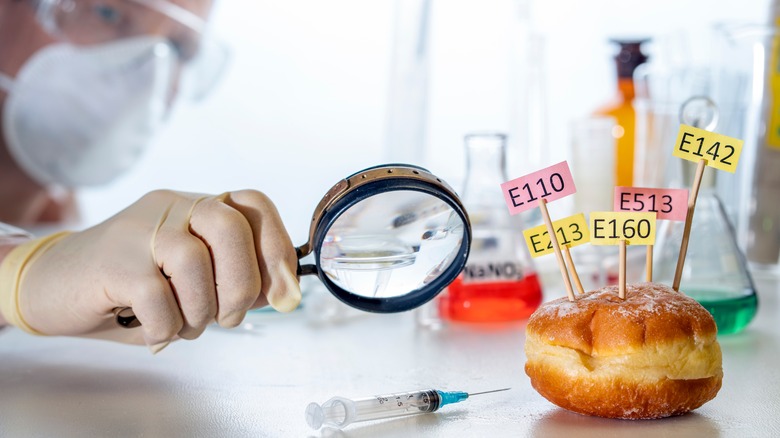The Preservative You Didn't Know Was In Your Food
Oftentimes, there's a certain level of willful ignorance when it comes to knowing what's in the foods we eat. Unless you're raising your own animals and consuming strictly fresh produce straight from the soil, there's no way to know for sure how the food you're consuming has been made or what has been added to it. Packaging buzzwords such as "all natural" can make things even more confusing, enticing you to purchase a product without knowing that it contains a mysterious ingredient you didn't "sign up for" upon purchasing. One example of this is an additive called potassium sorbate.
Eat This, Not That notes that potassium sorbate is made of sorbic acid and potassium chloride. It's odorless, colorless, and mainly utilized as a preservative to prevent the development of fungus in foods. While some may want to eschew any sort of chemical additives or compounds in their diet, it can be somewhat reassuring to know that the FDA declares potassium sorbate as "safe when used in accordance with good manufacturing or feeding practice."
Is potassium sorbate dangerous?
Healthline states that potassium sorbate was found naturally in the 1850s from ash trees and has been used in food production for the last few decades, though typically in synthetic form. The compound is used in everything from pet foods and personal care products to cheese, canned produce, soft drinks, wine, yogurt, and other packaged goods.
Clearly, it's tough to avoid potassium sorbate if you buy anything that comes in a box, jar, or can. Fortunately, adverse health effects from consuming the chemical compound are unlikely. Per Healthline, some people have rare potassium sorbate allergies, which are most likely to manifest as non-urgent skin irritation from cosmetics containing the ingredient. If you think you may be allergic to potassium sorbate, be sure to pay attention to ingredients lists to avoid any side effects. Otherwise, Livestrong notes that potassium sorbate is used in very small amounts and is easily processed by the body. Further, it can protect consumers from foodborne illness, such as from salmonella, and ensure the safety of foods that may otherwise cause harm.

